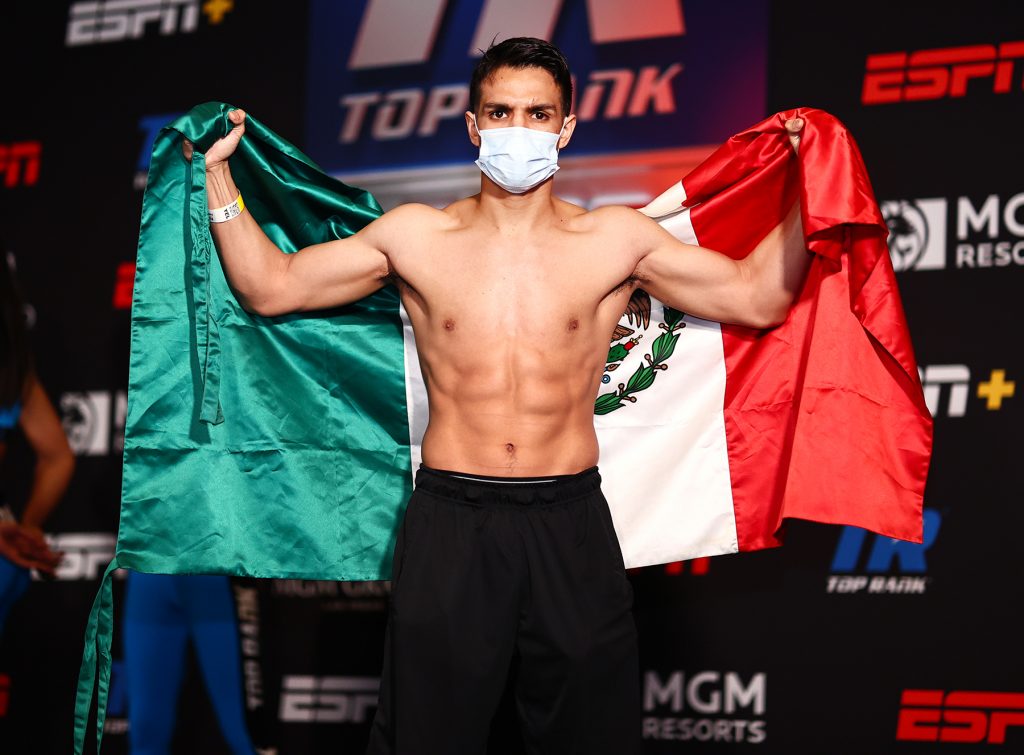Proper matchmaking on a proper platform

By Bart Barry-
Saturday on ESPN+ California’s Jose Zepeda and Belarus’ Ivan Baranchyk made a junior welterweight nontitle fight that should prove the year’s best. Each man got knocked-down four times in fewer than five rounds, yet there was nothing comical about the action. There was nothing lighthearted about the finale, either, when Zepeda dangled Baranchyk over the abyss at 2:50 of round 5.
The most-telling bit of forecasting happened before the match, when ESPN flashed its junior welterweight ratings and showed its main event fighters in sixth and seventh place. It wouldn’t have mattered if the graphic’d had them one and two or 15th and 16th, frankly, because what mattered is what matters first in any contest: evenness. Zepeda and Baranchyk over their cumulative 55 prizefights had proved themselves equals in a consensus that emerged messily, as reliable consensuses usually do, as they plied their crafts first in Mexico and Belarus then on the West and East Coasts of the U.S., having few opponents in common.
There’s the matter of styles, too, of course, but that’s a predictor of entertainment more than excellence; any sadist can be entertained by an overmatched slugger mauling a weakling volume-puncher, but such spectacles never make memorable fights. What makes a fight memorable is when both combatants make choices that make the other man transcend himself, and both did Saturday.
Baranchyk’s strength discomfited Zepeda, but Zepeda’s precision snatched Baranchyk’s consciousness, rendering him bluemat origami. However many knockdowns there were, or should have been, they didn’t predict the knockout well as other events did. Credit as ever to commentator Timothy Bradley, who noticed Baranchyk’s stiffened leg while everyone else kept watch on his head and fists.
Zepeda got Baranchyk in trouble early, even in a round Zepeda lost 10-7, by striking the onrushing Belarusian in full rush. This was not the Zepeda who tried to play keepaway from opponents behind good boxing in the past but instead a pupil of what former opponents outwilled him and used their volition to overcome his class. As both an athlete and entertainer, Zepeda learned, he must plant his feet and fight. Whenever he did, Saturday, things improved for him. When he retreated and gave Baranchyk’s punches room to unfurl, Zepeda got undone.
Commentator Bernardo Osuna made a great observation as to why: Zepeda’s retreats from Baranchyk’s wild lunges became wild themselves, so as to keep time and distance, and wild retreats ever bring a fighter to the ropes and their elasticity. Baranchyk, who has only one plan but knows that plan intimately, timed elasticity’s effect and doubled the force of his punches by catching Zepeda being rebounded at him.
Zepeda, a prizefighter who prefers a controlled setting, surrendered all control of space and pace each time he got returned to Baranchyk, hurtling, by the ropes. So long as the match happened at ringcenter, no matter how many times Baranchyk felled him with balanceshot hooks, Zepeda knew he’d be OK if his conditioning held up. That must’ve been a thought in Zepeda’s mind or his corner’s. Baranchyk is just about the last man you’d want to show a sign of fatigue, feasting as he does on oppponents’ fear for its rejuvenating effect.
If Baranchyk is not quite chinny it’s still his chin that represents his weakest spot. In any other test of fortitude, one imagines, Baranchyk might best Zepeda, but not chin. Zepeda got hit by fully leveraged shots and dropped quarce and barely deflected a halfdozen nearmisses but never lost his wits and stood square to Baranchyk’s attack and looked for what holes he might exploit.
Baranchyk cannot be dissuaded, and Zepeda was right not to try. So long as Baranchyk was conscious he would rush forward – not unlike Vassiliy Jirov’s stomping towards James Toney even as his legs gave out – as it is his pedigree. If Baranchyk’s just barely too young to remember the Soviet Union he sure isn’t too young to have been raised by folks who endured the deprivation of its final days, collapse and aftermath, scholars of cruelty and what it does to employers and victims, both.
Hence the immediate sympathy for Baranchyk as he lay motionless; he had followed orders directly to unconsciousness. There was an air of betrayal to it. A noble man who finds a purpose and devotes himself to it slavishly, we’re told in everything from fairy tales to epic poems, emerges a hero. There was Baranchyk following his uncompromising strategy of melting another man’s rubbery will, and prevailing too, and then he wasn’t. The end came in an instant. A professional athlete contorted in a wrongful shape by a body severed from its command center, Baranchyk looked desperate for medical attention one second later.
Bradley and Osuna’s class, too, came through on the broadcast; Baranchyk’s ordeal didn’t create Osuna and Bradley’s strong character but revealed it – two men who were pitchperfect in their coverage of a fighter’s injury not because they rehearsed it but because they had experiences and trust enough to go with their intuition and not miss. How refreshing. Men who knew how to quiet down, who had more than one speed. You can watch boxing for decades and never see a broadcast handle what happened Saturday with the grace ESPN+’s booth did.
Rare that a fight be so excellent and require no rematch, but that’s how Zepeda-Baranchyk felt; both men did exactly as they planned to do and one man had to be driven to the hospital afterwards. Neither man will be the same. Baranchyk’s chin will be a target and source of doubt henceforth. Zepeda’s power and force will compose a wildcard that complements his class.
Bart Barry can be reached via Twitter @bartbarry